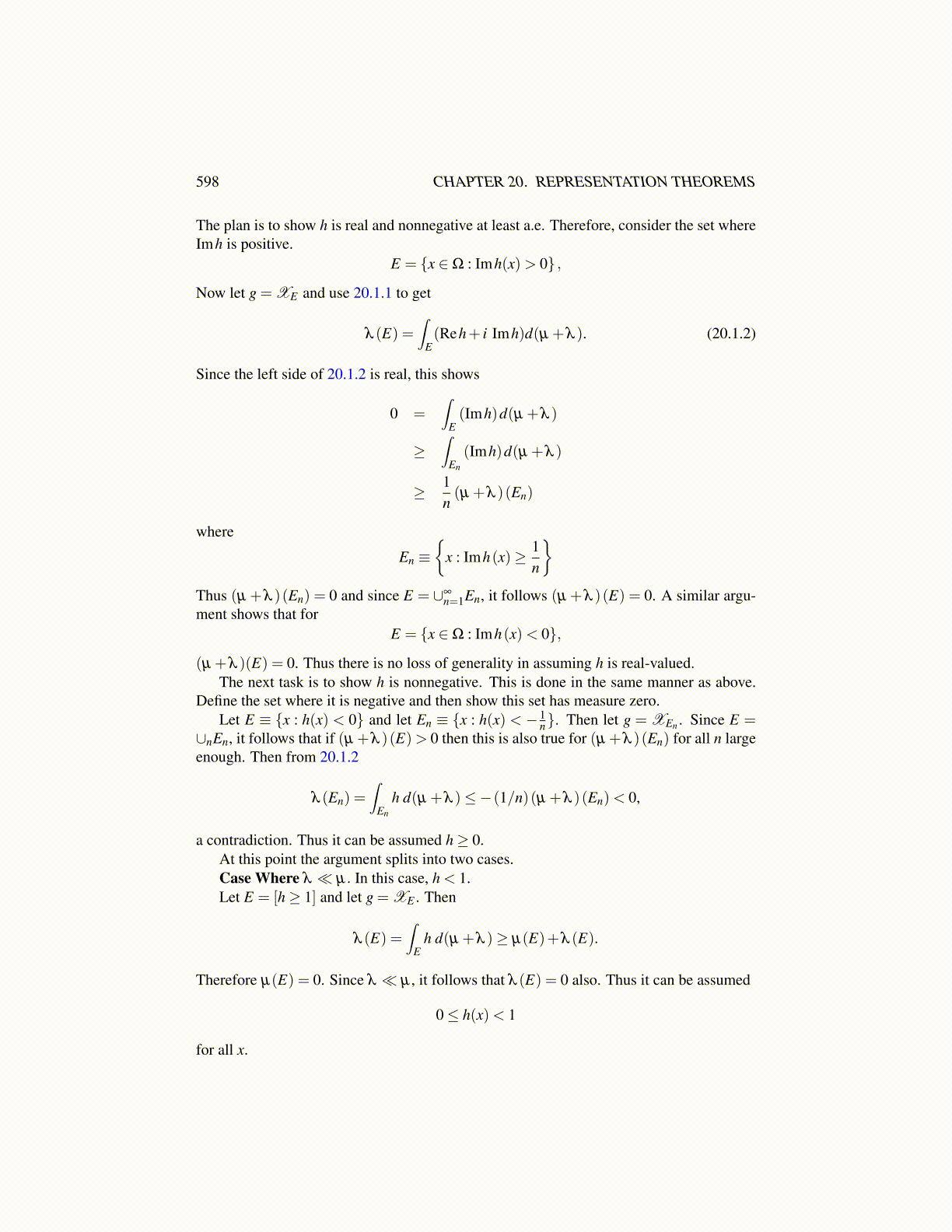
598 CHAPTER 20. REPRESENTATION THEOREMS
The plan is to show h is real and nonnegative at least a.e. Therefore, consider the set whereImh is positive.
E = {x ∈Ω : Imh(x)> 0} ,
Now let g = XE and use 20.1.1 to get
λ (E) =∫
E(Reh+ i Imh)d(µ +λ ). (20.1.2)
Since the left side of 20.1.2 is real, this shows
0 =∫
E(Imh)d(µ +λ )
≥∫
En
(Imh)d(µ +λ )
≥ 1n(µ +λ )(En)
where
En ≡{
x : Imh(x)≥ 1n
}Thus (µ +λ )(En) = 0 and since E = ∪∞
n=1En, it follows (µ +λ )(E) = 0. A similar argu-ment shows that for
E = {x ∈Ω : Imh(x)< 0},
(µ +λ )(E) = 0. Thus there is no loss of generality in assuming h is real-valued.The next task is to show h is nonnegative. This is done in the same manner as above.
Define the set where it is negative and then show this set has measure zero.Let E ≡ {x : h(x) < 0} and let En ≡ {x : h(x) < − 1
n}. Then let g = XEn . Since E =∪nEn, it follows that if (µ +λ )(E)> 0 then this is also true for (µ +λ )(En) for all n largeenough. Then from 20.1.2
λ (En) =∫
En
h d(µ +λ )≤−(1/n)(µ +λ )(En)< 0,
a contradiction. Thus it can be assumed h≥ 0.At this point the argument splits into two cases.Case Where λ ≪ µ. In this case, h < 1.Let E = [h≥ 1] and let g = XE . Then
λ (E) =∫
Eh d(µ +λ )≥ µ(E)+λ (E).
Therefore µ(E) = 0. Since λ ≪ µ , it follows that λ (E) = 0 also. Thus it can be assumed
0≤ h(x)< 1
for all x.